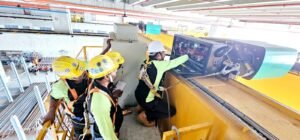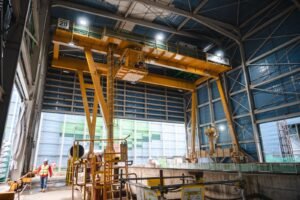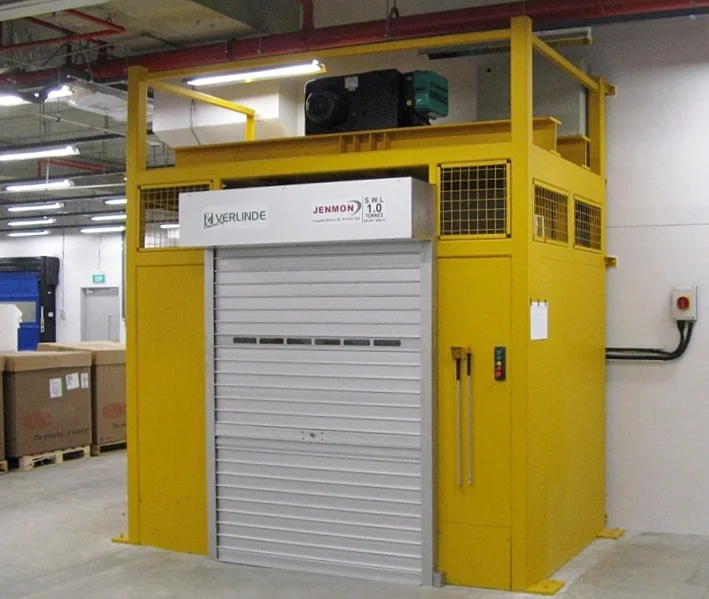Jenmon | Blogs
Why Your Warehouse Efficiency Is Suffering Without the Right Goods Hoist
The Hidden Bottleneck in Your Warehouse Operations
You face countless efficiency challenges in your warehouse every day. Staff shortages, rising costs, and tight deadlines create constant pressure. Yet one crucial element often gets overlooked: vertical transportation of stocks or cargo. Your goods hoist system quietly determines how smoothly everything flows between floors.
When you choose the wrong lift system, it creates ripple effects throughout your entire operation. The right equipment can transform your warehouse productivity, whilst poor choices leave you struggling with delays, safety concerns, and frustrated workers who can’t move cargo efficiently.
1. Inadequate Lifting Capacity Slows Everything Down
Your hoist’s load capacity directly impacts every operation in your warehouse. When you select equipment with insufficient ton capacity, you create instant bottlenecks. Workers must make multiple trips to move cargo that should travel in one lift. This wastes precious time and increases labour costs.
You need equipment that matches your heaviest loads and busiest periods. The wrong size forces your team to work around limitations rather than efficiently moving goods between floors. Your building structure can handle more, but your lift system becomes the weakest link, slowing down your entire vertical transportation process.
2. Poor Safety Features Put People and Goods at Risk
Safety failures in your warehouse can devastate both operations and lives. Your goods hoist must include essential safety features like reliable brake systems, proper guide rails, and quality wire rope. Without these components, you risk catastrophic failure that damages cargo and injures staff.
Every passenger hoist system requires multiple safety mechanisms that meet strict standards. Your team needs confidence that the equipment won’t fail during operation. Poor safety design creates liability issues and insurance headaches. You can’t afford to compromise on safety requirements when lives and valuable stock depend on reliable vertical transportation within your building structure.
3. Lack of Speed and Efficiency Hurts Productivity
Slow hoist systems cripple your warehouse productivity every working day. When your lift car takes too long to travel between floors, you lose money with each delayed shipment. Efficient vertical transportation keeps your operation flowing smoothly from the ground floor to the top level.
Outdated equipment can’t match the speed your business demands. You need systems that move quickly whilst maintaining safety standards. Fast, reliable lifts help your team complete more tasks per hour. You have to move fast when you’re working toward a deadline. Ditching manual processes for modern equipment can take your warehouse from struggling to succeeding in the modern market.
4. Unsuitable Equipment for the Warehouse Environment
Many warehouses use equipment that wasn’t designed for industrial demands. Your facility needs systems built for manufacturing environments, not lightweight office applications. Industrial equipment handles the rough treatment, heavy loads, and constant use that your warehouse requires. You need hoists that match your building’s height, access points, and operational range.
Generic lift shaft solutions often fail to fit properly or perform reliably. Your construction and layout demand specific equipment that works within your facility’s unique constraints. Choosing the wrong equipment often causes it to break down, leading to expensive repairs and disrupting operations, which can harm what you earn and your reputation.
5. Limited Customisation Leads to Operational Bottlenecks
Generic hoist solutions create problems because your warehouse has specific needs. You require customised door configurations, precise landing positions, and lift shaft dimensions that match your building structure. Standard equipment rarely fits your operational flow or space constraints.
Your team needs systems designed around how they actually work, not generic solutions. Custom drive systems, control features, and safety components ensure smooth integration with existing processes. When you settle for standard sizes and basic designs, you create workflow disruptions. Proper customisation eliminates bottlenecks and maximises your floor space whilst improving overall efficiency and worker satisfaction.
6. Working with the Wrong Supplier Costs More in the Long Run
Your choice of goods hoist supplier affects every aspect of your operation. Poor suppliers offer attractive initial prices but deliver substandard service, unreliable equipment, and inadequate support. Your partners must be familiar with the specific needs and difficulties in your industry. Top-quality suppliers take care of installation, servicing, and continued support for clients.
They help you navigate market options and select equipment that truly meets your needs. Cheap initial prices often lead to expensive problems later. The right supplier becomes a valuable partner who supports your growth and helps optimise your vertical transportation investment over many years.
7. Missing the Right Hoist Means Lost Warehouse Potential
Without proper goods hoists, your warehouse can’t reach its full potential. You limit growth opportunities when vertical movement isn’t optimised for your factory or manufacturing operations. The right equipment used for vertical transportation unlocks efficiency gains that transform your business. Your building might accommodate more stock levels, but poor lifts prevent expansion.
You miss chances to increase throughput, reduce labour costs, and improve customer satisfaction. Ideal systems move stocks or cargo safely and efficiently, supporting ambitious growth projects. When you invest in proper vertical transportation, you create opportunities for expansion that weren’t possible with inadequate equipment.
Introducing Jenmon’s Goods Hoist Solutions
Jenmon Goods Hoists serve warehouses and manufacturing plants with multi-level buildings where you need reliable transportation of goods or cargo between floors. These systems feature smooth operation and large loading capacity, making them perfect for factories, warehouses, and shopping centres.
You can choose a lifting capacity from 1 tonne to 10 tonnes with multiple floor landings to match your requirements. Jenmon customises each system according to your specific needs. The shaft can use an independent lattice structure construction or integrate with your building’s existing lift shaft, satisfying your general operational requirements whilst providing reliable, safe loading solutions.
Conclusion: Lift Your Warehouse Performance the Right Way
Poor goods hoist choices create cascading problems throughout your warehouse operation. Inadequate capacity, safety risks, slow speeds, and unsuitable equipment limit your potential and increase costs. Generic solutions and unreliable suppliers compound these issues, whilst missing proper vertical transportation altogether prevents growth and expansion opportunities.
You deserve better than struggling with equipment that holds back your success. Take time to evaluate your current setup. Consider how proper goods hoists could transform your efficiency, safety, and profitability. Contact us today for tailored advice and professional installation that lifts your warehouse performance to new heights.




